Folsom Prison
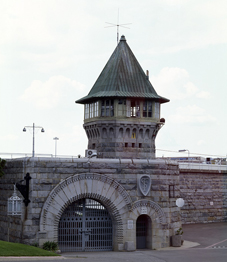
Folsom Prison opened in 1880 as one of the nation’s first maximum security prisons. Constructed along the American River, the prison is built almost entirely of local granite stone. The prison reached iconic status in the 1960s after the release of Johnny Cash’s “Folsom Prison Blues.”
(Photo from the Carol M. Highsmith Archive, Library of Congress, Prints and Photographs Division.)
For more information, see Folsom Prison.
Jimmy Stewart's Handprints at Grauman's Theater
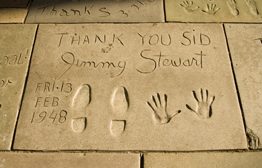
Since the time of its construction in 1927, Sid Grauman’s Chinese Theater has remained one of Hollywood’s most iconic movie theaters. Today, more than 250 celebrity handprints, footprints, and autographs have been immortalized on the theater’s cement forecourt.
(Photo from the Carol M. Highsmith Archive, Library of Congress, Prints and Photographs Division.)
For more information, see Grauman's Theater.
Barn at Olompali State Historic Park
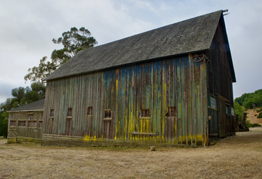
Olompali State Historic Park is located on what was once Rancho Olompali and is named for the Miwok village that once occupied the land. The park contains the site of the oldest house north of the San Francisco Bay, constructed in 1776 by the Chief of the Olompali tribe. Rancho Olompali was placed on the National Register in 1973 and became a state historic park in 1976.
For more information, see Olompali State Historic Park.
Memorial Chapel at Stanford University
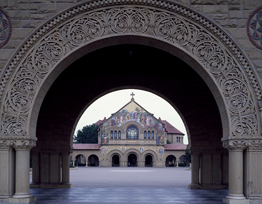
The architectural crown jewel of the Stanford campus, the Stanford Memorial Church was constructed in 1903 by Jane Stanford as a memorial to her husband, Leland. When it opened, it was one of the earliest and most prominent interdenominational churches in the American West.
(Photo from the Carol M. Highsmith Archive, Library of Congress, Prints and Photographs Division.)
For more information, see Stanford Memorial Church.
Weaverville Joss House State Historic Park
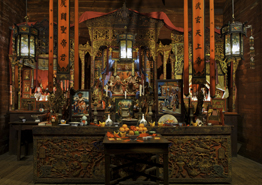
The Weaverville Joss House is California’s oldest continuously used Chinese temple. Despite being a State Historic Park, the Taoist temple still functions as a place of worship and religious ceremony. Erected in 1874, the temple that stands today is preceded by one destroyed in a fire.
For more information, see Weaverville Joss House State Historic Park.
